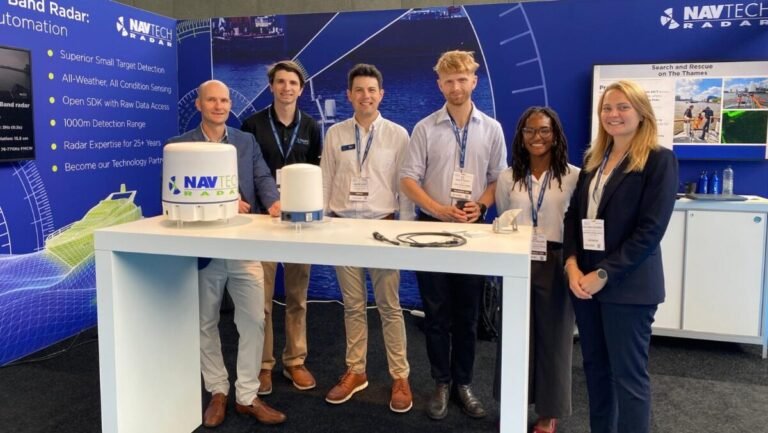UK-based commercial radar specialist Navtech Radar has announced its partnership with US-based marine software developer Tocaro Blue. The companies have joined forces to tackle the challenges that arise from safely (and reliably) navigating crewed and autonomous vessels, particularly in complex, close-range environments.
Traditional marine radar technologies are typically most effective at long ranges but can struggle to identify smaller or nearby obstacles. By combining Navtech’s W-band radar systems with Tocaro Blue’s machine-learning powered ProteusCore software, the partnership aims to deliver a solution that allows vessels a clearer understanding of their surroundings, even in poor visibility or congested waterways.
“The opportunity to collaborate with Tocaro Blue is an exciting moment for the marine industry. The partnership enables the creation of a robust, all-weather maritime perception system that delivers unprecedented situational awareness, object detection, and classification performance – redefining capability standards in the maritime domain; a critical step in supporting the transition toward increased autonomy in the marine environment,” says Sam Wood, segment lead at Navtech Radar.
The W-band radar from Navtech, featuring a 1,000-metre range, centimetre-level resolution, and a 1.8-degree beam width, is optimised for short-range detection. Its capability is particularly relevant for autonomous surface vessels (ASVs) and nearshore operations. Tocaro Blue’s software then interprets data, using deep learning to detect, classify and track objects in real time.
For both human operators and autonomous systems, the integrated system supports decision-making onboard.
“Our collaboration with Navtech Radar creates an unrivalled solution for the maritime industry,” says Andrew Rains, senior sales director at Tocaro Blue. “By combining their exceptional sensing capabilities with our novel ML-based processing technology, we’re enabling vessels to comprehend their environment with remarkable clarity and track targets with high accuracy.”
The joint system targets a range of marine applications, including autonomous workboats, coastal surveillance, port operations, commercial shipping, and defence. It aims to meet the increasing demand for advanced perception technologies that can operate reliably in dynamic maritime environments.
Read more about marine technology

